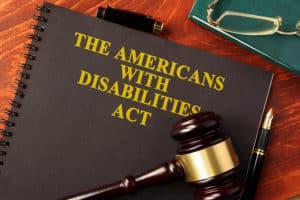04 Oct ADA and IDEA: Protecting the Rights of People with Disabilities
Are you familiar with the differences between the ADA (Americans with Disabilities Act) and the IDEA (Individuals with Disabilities Education Act)? Both laws were designed by the U.S. government to protect the rights of people with disabilities and to lessen discrimination against them. While the laws have similar goals, they are slightly different in focus.

Under the ADA, people with disabilities have the right to be employed if they are qualified and undergo the same application process as anyone else. The ADA also protects the right of disabled people to use public transportation, public accommodations, and telecommunications. Government services as well as many businesses that provide goods and services to the public must make those goods and services accessible to people who have disabilities. Today this includes content and resources available online.
The IDEA was also created to protect people with disabilities. This law is a U.S. federal education law that focuses on children, ages 3 to 21. The IDEA also went into effect in 1990, with a goal of providing early intervention and special education and related services to children with disabilities. The IDEA covers a range of disabilities, such as autism, deafness, intellectual or developmental disabilities, speech or language impairments, visual impairments, orthopedic impairments, specific learning disabilities, and more. It states that every child has the right to a Free and Appropriate Public Education (FAPE). Under the IDEA, federal financial assistance is provided to State and local education agencies to guarantee special education services to eligible children.
The law also requires public schools to create an Individualized Education Plan (IEP) for every disabled child. IEPs are developed by a child’s educational team, which typically includes the child’s parent(s) and at least one general education teacher, special education teacher, district administrator, and a school psychologist or other professional. The IEP goal is to customize a child’s educational program to his or her specific needs and outline the services that will be provided to help the child be successful in the K-12 system.
Emergent Learning provides support in creating accessible print and digital materials for people with disabilities. If you are interested in having your educational resources evaluated, we can review a sample of your content and provide feedback. Email us at peterm@emergentlearningllc.com.
